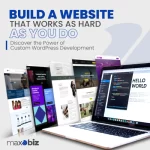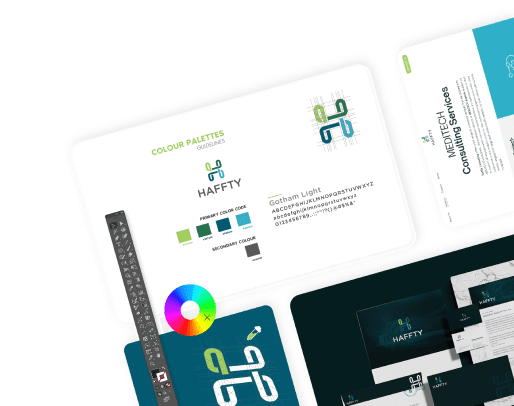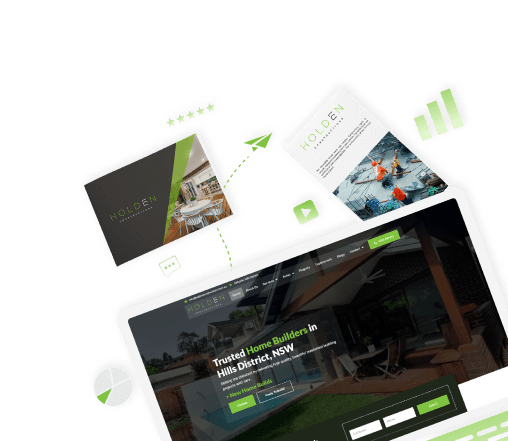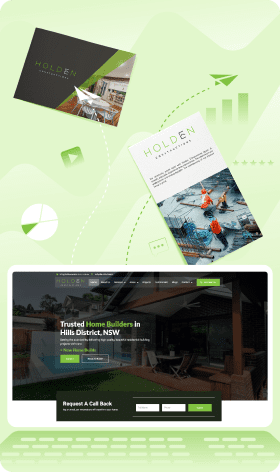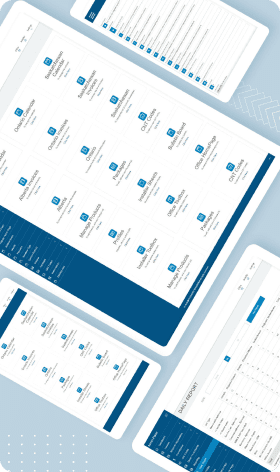When it comes to creating a WordPress website, choosing between custom theme development and pre-built themes is a critical decision. Each option has its advantages and disadvantages, and understanding them is essential for making an informed choice. In this article, we’ll explore the differences between custom WordPress themes and pre-built themes, along with their respective benefits and drawbacks.
Custom WordPress Themes: Tailored to Your Needs
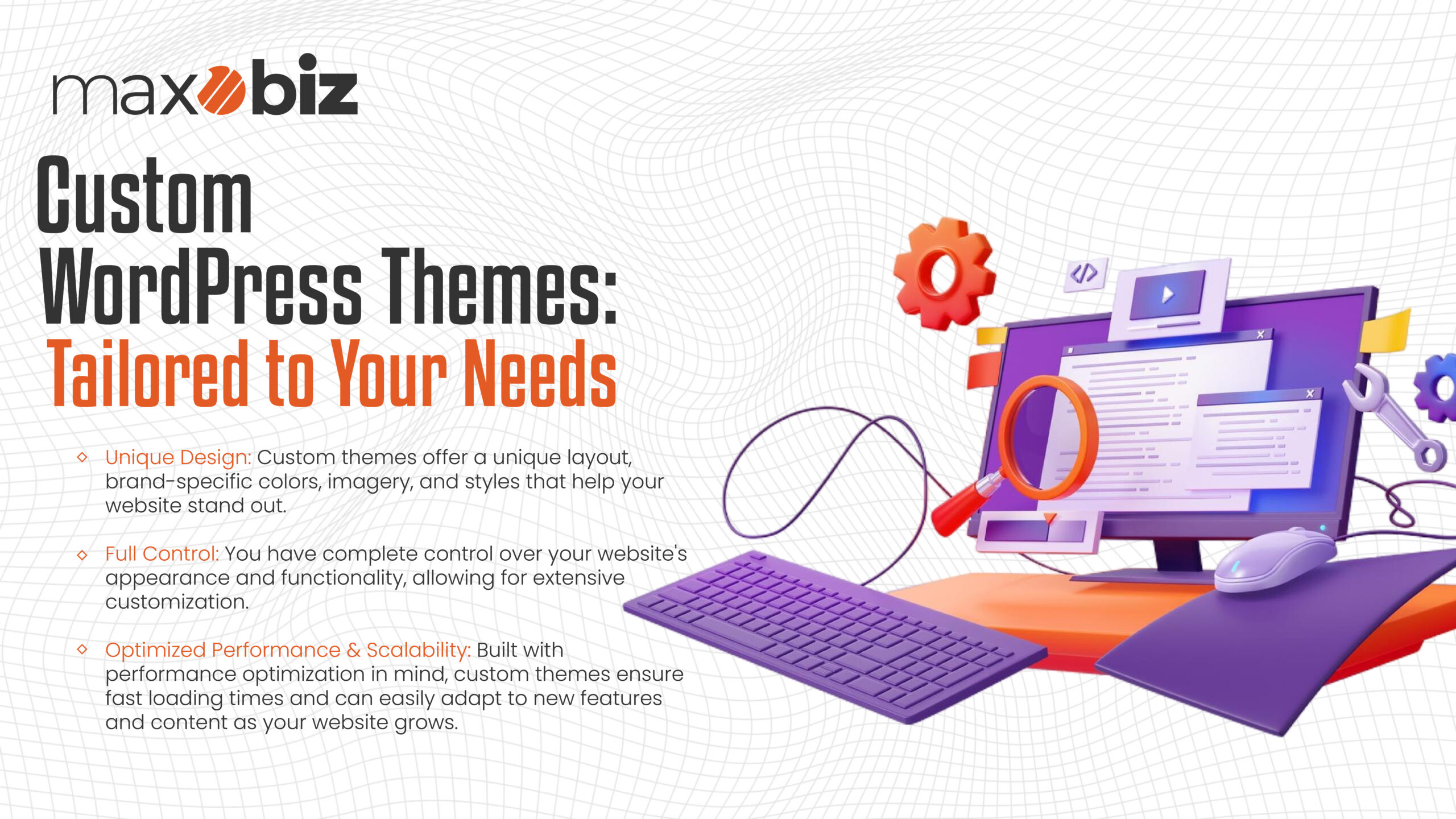
Custom WordPress themes are bespoke designs crafted exclusively for your website, ensuring a tailored solution that perfectly aligns with your brand and requirements. Here’s a closer look at the key features and benefits of custom WordPress themes:
Unique Design: When you opt for a custom theme, skilled designers create a layout from the ground up, incorporating your brand colors, imagery, and style preferences. This ensures that your website stands out from the crowd and accurately reflects your brand identity.
Full Control: With a custom theme, you have complete control over your website’s appearance and functionality. From the layout and typography to the navigation and interactive elements, you can customize every detail to meet your specific needs and preferences.
Optimized Performance: Custom themes are carefully crafted with performance optimization in mind. This includes efficient coding practices, image optimization, and other techniques to ensure fast loading times and a seamless user experience across devices.
Scalability: One of the significant advantages of custom themes is their scalability. As your website grows and evolves, your custom theme can easily accommodate new features, content, and functionalities. This scalability ensures that your website remains flexible and adaptable to meet your changing business needs over time.
Also Read This Blog: WordPress Theme Design Trends and Best Practices
Pre-built WordPress Themes: Convenience and Affordability
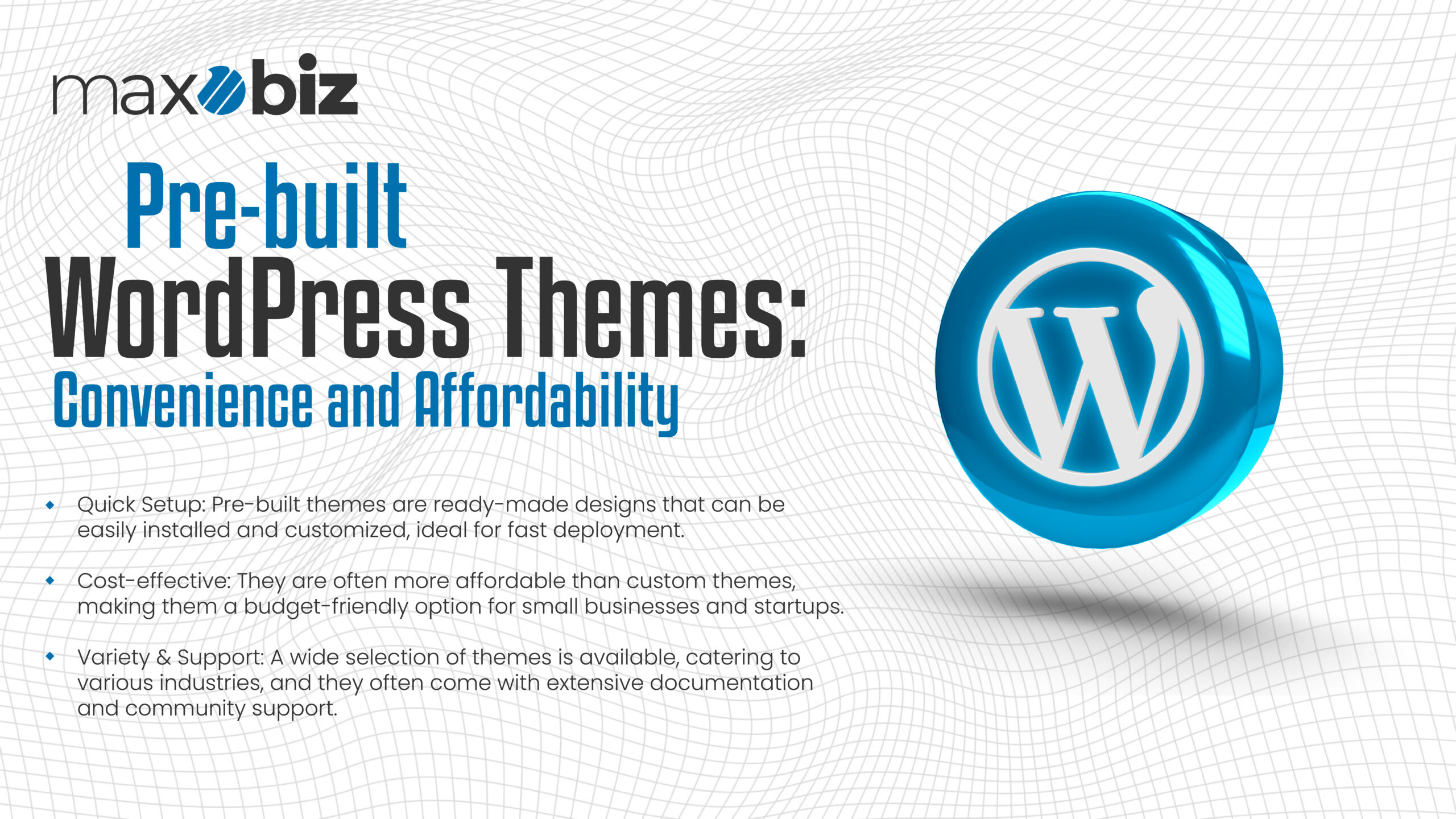
Pre-built WordPress themes, however, are ready-made designs that can be easily installed and customized. They offer:
Convenience: Pre-built themes are quick and easy to set up, making them ideal for those who need a website up and running fast.
Cost-effectiveness: Pre-built themes are often more affordable than custom development, making them a budget-friendly option for small businesses and startups.
Wide Variety: There is a vast selection of pre-built themes available, catering to various industries, styles, and functionalities.
Community Support: Pre-built themes often come with extensive documentation and support from the theme developer and the WordPress community.
Benefits of Custom Themes
Custom WordPress themes offer several benefits, including:
Unique Brand Identity: Custom themes allow you to create a website that reflects your brand identity and sets you apart from competitors.
Tailored Functionality: With a custom theme, you can include specific features and functionalities tailored to your business needs.
Enhanced Performance: Custom themes are designed for optimal performance, guaranteeing swift loading speeds and an enhanced user experience.
Scalability: Custom themes can easily adapt and grow with your business, accommodating future expansion and changes.
Pros and Cons of Pre-built Themes

Pre-built WordPress themes have their own set of advantages and disadvantages:
Pros
Quick and Easy Setup: Pre-built themes come with ready-made templates and configurations, allowing for quick and hassle-free setup. This is ideal for users who want to launch their website rapidly without the need for extensive design or development work.
Affordable: Pre-built themes are generally more budget-friendly compared to custom themes since they are sold at a fixed price or available for free in some cases. This makes them accessible to users with limited resources or those looking to minimize upfront costs.
Wide Variety of Designs and Functionalities: The marketplace for pre-built themes offers a vast array of designs and functionalities catering to different industries, niches, and website purposes. Users can choose from a diverse selection of layouts, styles, and features to find a theme that suits their needs.
Extensive Documentation and Support: Many pre-built themes come with comprehensive documentation and support resources, including tutorials, guides, and forums. This can be valuable for users who require assistance with theme installation, configuration, or troubleshooting.
Cons:
Lack of Uniqueness: Since pre-built themes are available to a wide audience, they may lack uniqueness and fail to differentiate your website from others using the same theme. This can impact brand identity and make your website less memorable to visitors.
Limited Customization Options: While pre-built themes offer some degree of customization through theme options and settings, they often have limitations in terms of flexibility. Users may encounter restrictions when trying to modify specific design elements or add custom functionalities.
Potential Performance Issues: Pre-built themes may suffer from performance issues such as slow loading times, inefficient code, or compatibility issues with plugins and browsers. These issues can affect user experience and SEO rankings, particularly on mobile devices.
Dependency on the Theme Developer: Users of pre-built themes rely on the theme developer for updates, bug fixes, and ongoing support. If the developer discontinues support or fails to provide timely updates, users may encounter security vulnerabilities or compatibility issues with future WordPress releases.
Also Read This Blog: Enhancing Your Website with WordPress Theme Integration Services
Conclusion: Making the Right Choice
In conclusion, choosing between custom WordPress theme development and pre-built themes depends on your specific needs, budget, and goals. If you require a unique design and tailored functionality, custom theme development is the way to go. However, if you need a website up and running quickly and affordably, pre-built themes offer convenience and cost-effectiveness. Ultimately, the key is to assess your requirements carefully and choose the option that best aligns with your business objectives and priorities.


